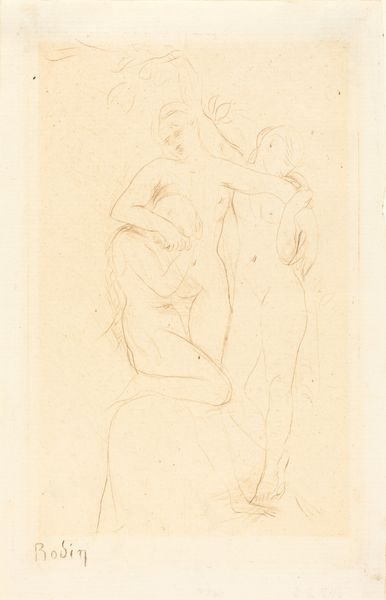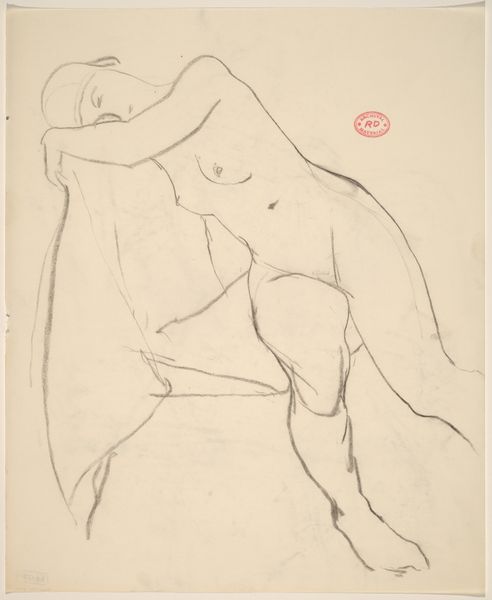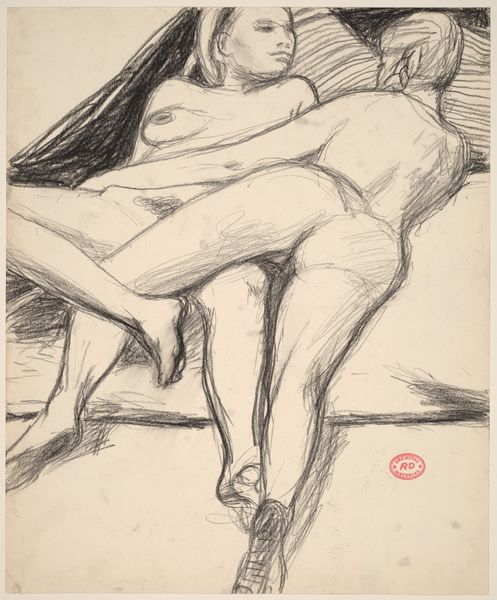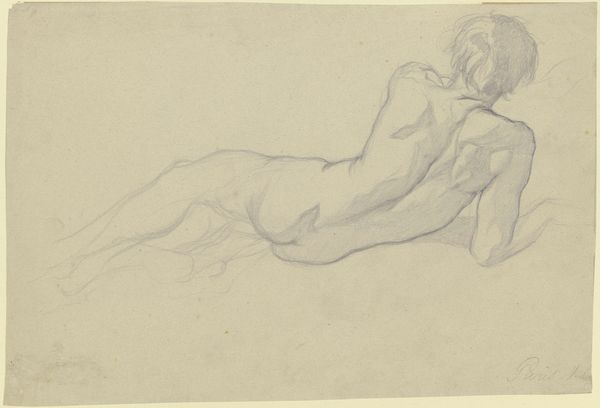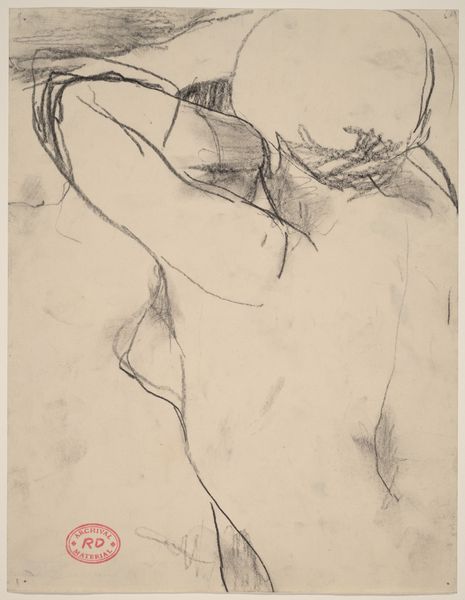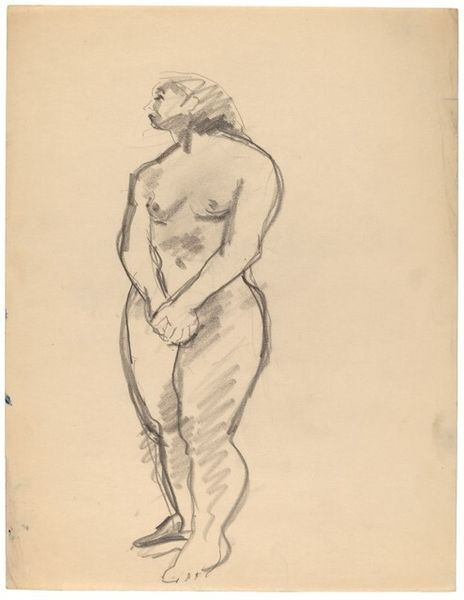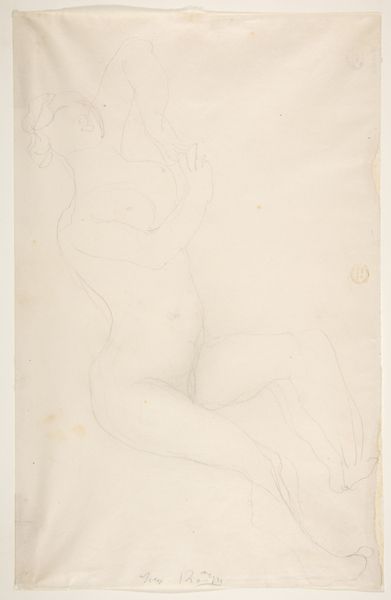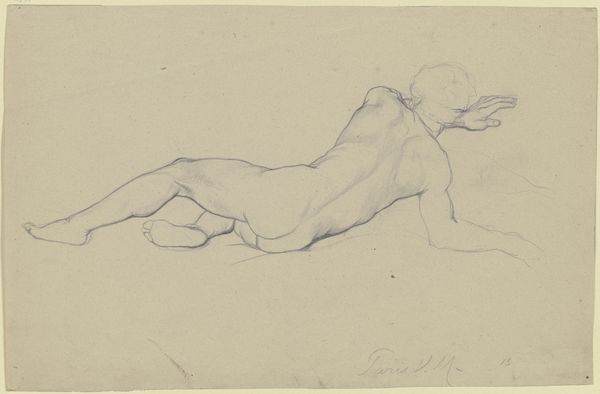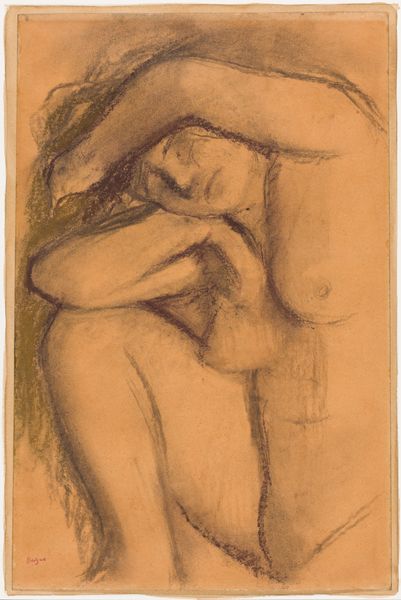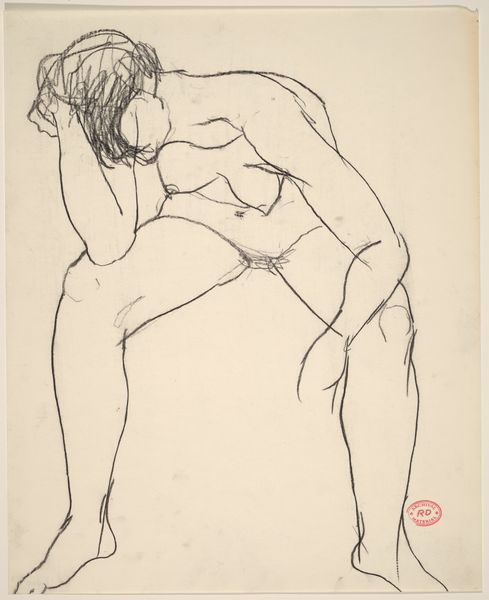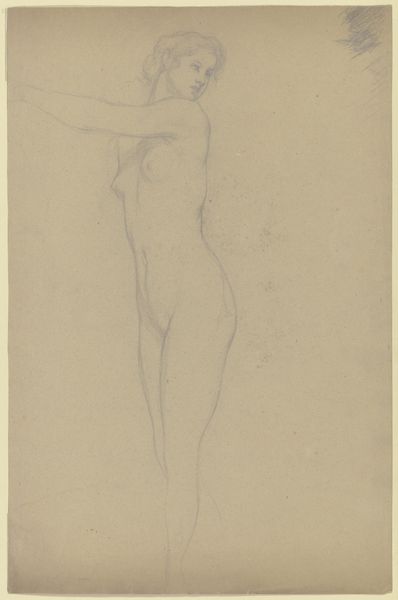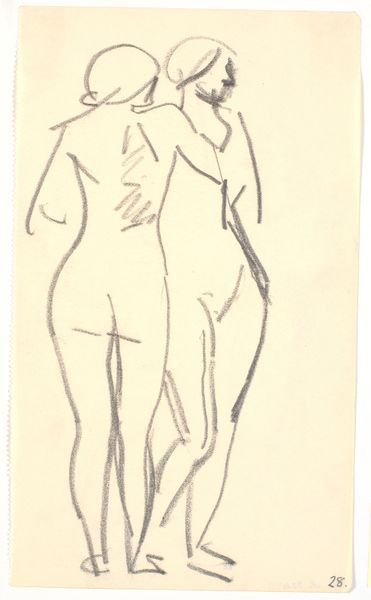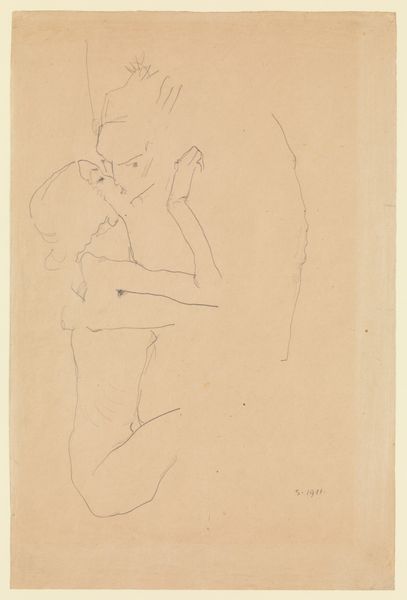
drawing, pencil
#
drawing
#
pencil sketch
#
figuration
#
pencil
#
nude
Dimensions: 313 mm (height) x 239 mm (width) (bladmaal)
Editor: This is "Liggende kvindelig model," a pencil drawing by Karl Isakson from around 1905-1907. It’s a study of a nude, reclining woman, and I’m struck by how simple the lines are, yet they capture so much about the form. What do you see in this piece? Curator: I see a drawing deeply embedded in a period grappling with shifting perspectives on the female form. The early 20th century was marked by both increased liberation for women and continued objectification within art. Consider how the male gaze operates here – or perhaps, the attempt to subvert it through the very act of sketching, capturing a raw, unfinished truth. Does the pose invite a feeling of vulnerability, or does it project agency? Editor: I think it's both. There's a vulnerability in the nudity, but the way she holds her arm behind her head suggests a certain self-awareness, a casualness that feels… defiant, almost? Curator: Precisely! And how might that defiance connect with feminist discourse of the time? Think about the challenges women artists faced when portraying the female nude – how to reclaim the subject from centuries of male-dominated representation. Was Isakson engaging with these conversations? Did he aim to merely depict a nude body or provoke a reconsideration of established norms? Editor: I hadn't really thought about it that way. The art of the nude can definitely have political intent. Looking at it again, there's an honesty to the form. It’s not idealized; it’s a real body. Curator: Yes, this brings us to an interesting point about realism versus idealization in art and its social implications. So, how might viewing this piece change our understanding of societal attitudes toward the female body then, and perhaps even now? Editor: Thinking about it now, I feel as though the drawing sparks questions about the relationship between the artist, model, and the viewer, rather than providing any clear answers. Curator: I completely agree. Art should be about questioning and critical engagement.
Comments
No comments
Be the first to comment and join the conversation on the ultimate creative platform.
